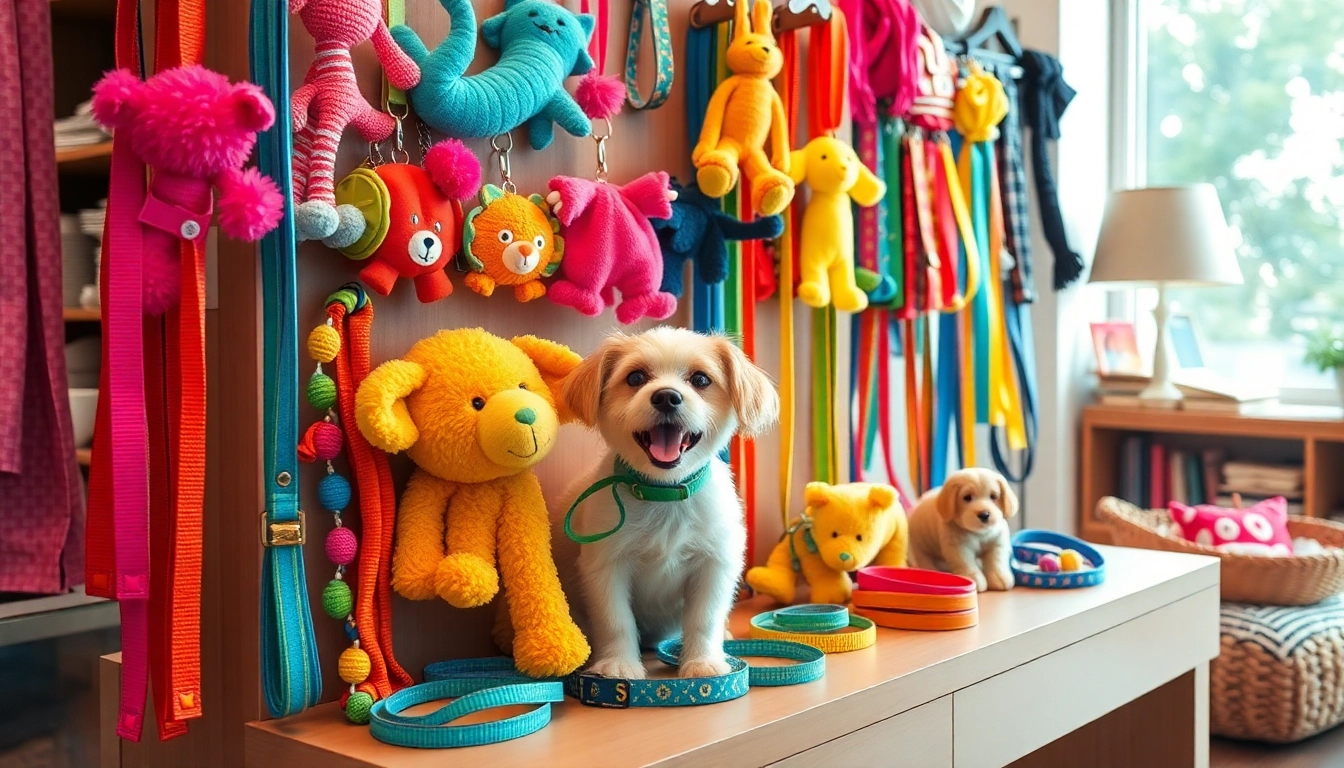Understanding Interactive Dog Toys
As dog owners, we constantly seek ways to keep our furry companions happy and healthy. One effective solution is through the use of interactive dog toys. These toys not only provide entertainment but also serve crucial health and behavioral functions. In this article, we will explore the multifaceted world of interactive dog toys, their benefits, how to choose the right one, and ways to effectively integrate them into your dog’s playtime routine.
What is an Interactive Dog Toy?
An interactive dog toy is designed to stimulate a dog’s mind and body through play. Unlike traditional toys, which might simply serve as chew items or fetch toys, interactive options promote engagement and challenge dogs to think. They often incorporate elements that require the dog to solve a puzzle, manipulate the toy in specific ways, or interact with their environment.
Benefits of Interactive Toys for Dogs
- Mental Stimulation: By challenging dogs to use their problem-solving skills, these toys keep their minds sharp.
- Physical Exercise: Many interactive toys encourage movement, which is essential for maintaining a healthy weight.
- Enhanced Bonding: Interactive toys often require owner involvement, facilitating bonding through cooperative play.
- Behavior Management: Engaging with interactive toys can reduce boredom-related behaviors, such as chewing and digging.
How Interactive Toys Differ from Traditional Toys
Traditional dog toys are often basic and passive, serving only to occupy a dog’s time. They may be as simple as a bone or a ball that the dog retrieves. In contrast, interactive dog toys offer a more dynamic experience. They can be complex, involving various shapes, textures, sounds, and mechanisms. For example, some might dispense treats when certain actions are performed, requiring the dog to think strategically about how to earn their reward.
Choosing the Right Interactive Dog Toy
With so many options on the market, selecting the right interactive dog toy can be daunting. However, understanding the various factors involved can simplify this process.
Factors to Consider When Selecting an Interactive Dog Toy
- Dog’s Size and Strength: Choose toys that are appropriately sized and durable based on your dog’s breed and strength level to avoid choking hazards.
- Activity Level: A more active dog may require more physically engaging toys, while a less active dog might benefit from mentally stimulating puzzles.
- Age and Health: Puppies and senior dogs may need softer, gentler options, while healthy adult dogs might enjoy toys that challenge their strength and agility.
- Material: Ensure the toy is made from non-toxic, durable materials that can withstand chewing and rough play.
Popular Types of Interactive Dog Toys
There are several popular categories of interactive dog toys, each serving different purposes:
- Puzzle Toys: These require dogs to solve problems or complete tasks to access hidden treats.
- Fetch Toys: Advanced fetch toys can launch balls or even move erratically, challenging your dog’s agility.
- Electronic Toys: Some toys interact electronically, like robotic pets or toys that move on their own.
- Hide-and-Seek Toys: These often come with smaller toys hidden inside a larger one that dogs can access.
Safety Features in Interactive Dog Toys
When selecting an interactive dog toy, safety is paramount. Look for features such as:
- Non-Toxic Materials: Ensure the toy is made from safe materials that will not harm your dog if chewed or ingested.
- No Small Parts: Avoid toys with small components that can be easily swallowed or become choking hazards.
- Durability: High-quality materials that resist tearing or breaking will enhance the toy’s lifespan and safety.
Benefits of Interactive Play for Dogs
Interactive playtime is not just fun; it is essential for a dog’s overall well-being. Through active engagement, dogs can experience a multitude of benefits.
Physical Health Benefits
Regular play with interactive toys promotes exercise, contributing to better muscle tone and cardiovascular health. As dogs chase, jump, and run, they burn calories, helping to maintain an ideal weight and prevent obesity-related health issues. Additionally, it’s an excellent way for dogs to expend energy, reducing restlessness and hyperactivity.
Mental Stimulation and Engagement
Interactive toys challenge dogs to think critically and creatively, which keeps their minds active and sharp. This mental stimulation is vital for preventing cognitive decline, particularly in older dogs. Dogs that engage in continual learning through play tend to exhibit better problem-solving skills and adaptability.
Reducing Boredom and Destructive Behavior
Boredom can lead to destructive behaviors, such as chewing on furniture or digging. By incorporating interactive toys into your dog’s routine, you provide an outlet for their energy and curiosity. Engaged dogs are less likely to turn to negative behaviors out of boredom, contributing to a happier and more harmonious household.
How to Incorporate Interactive Dog Toys into Playtime
Effectively using interactive dog toys involves more than just offering them to your dog. Creating an engaging playtime environment is essential.
Setting Up an Ideal Play Environment
The ideal play environment should be safe, spacious, and conducive to play. Here are some tips:
- Designate a Play Area: Choose a space free of potential hazards, such as cords, sharp objects, or fragile items.
- Provide Variety: Include a mix of interactive toys alongside traditional toys to cater to different aspects of your dog’s personality.
- Incorporate Comfort: Ensure the area is comfortable with non-slip surfaces, especially for older dogs or those with mobility issues.
Games to Play with Interactive Dog Toys
Incorporating games into playtime can further enhance the benefits of interactive toys. Here are some game ideas:
- Hide and Seek: Hide in different locations in your house and call your dog to find you using their favorite toy.
- Treat Search: Use puzzle toys that dispense treats and encourage your dog to figure out how to get to the reward.
- Obstacle Courses: Create a simple obstacle course using multiple interactive toys to challenge your dog physically and mentally.
Monitoring Your Dog’s Engagement with Toys
Observe how your dog interacts with their toys to ensure they remain engaged because this is critical for maximizing the benefits of interactive play. Look for signs of interest, such as:
- Active participation, tail wagging, and excitement when the toy is introduced.
- Problem-solving behavior, like approaching a puzzle toy from different angles.
- Seeking out the toy independently, indicating ownership and engagement.
Measuring the Effectiveness of Interactive Dog Toys
Determining whether an interactive dog toy is effective involves looking for specific indicators and adjusting your approach as needed.
Signs Your Dog Enjoys Their Interactive Toy
Several behavioral signs can indicate that your dog enjoys their interactive toy:
- Frequent Use: If your dog often goes back to play with the toy or brings it to you, it’s a good sign.
- Positive Reactions: Look for signs of excitement, such as barking, tail wagging, or heightened playfulness when they see the toy.
- Long Engagement Periods: If your dog plays with the toy for extended periods, it likely holds their interest.
Adjusting Toy Use Based on Your Dog’s Needs
Every dog is different, and preferences may change over time. Keep track of how your dog interacts with various toys and make adjustments as necessary:
- Switch toys regularly to keep playtime fresh and exciting.
- Observe your dog’s physical and emotional responses to their toys and adjust based on their engagement and enjoyment.
Incorporating Feedback from Your Dog for Toy Selection
Your dog’s behavior and enjoyment can serve as reliable feedback. Take note of their preferences and dislikes as you explore various interactive toys. Incorporate their responses into future toy selections to further customize their play experience.



